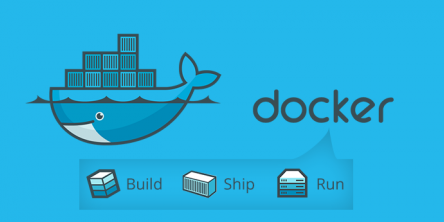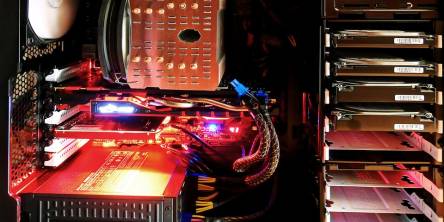How RAID process works in dedicated servers?

The abbreviation of RAID is Redundant Array of Independent Disks. It creates a single usable data disk in which multiple physical disks are combined into one set for improved speed and error tolerance. Although there are several levels of RAID types: RAID 0, RAID 1, RAID 5, RAID 6, and RAID 10 that use hardware RAID controllers for all RAID performance levels deployed, and increase reliable solutions.
Processing levels of RAID
RAID 0
Raid 0 is the first level of processing. In a RAID 0 system data is divided into blocks that are written to all disks in the array. Instantaneous use of multiple disks improves performance. This performance can be improved by using multiple controllers, ideally one controller per disk.
If you want to use RAID 0 only to combine the storage capacity of two drives into a single volume, consider increasing one drive in the folder path of the other drive. Raid 0 is supported on Linux, OS X as well as Windows and has the advantage that a single disk failure has no impact on the data of the second disk.
RAID 1
Data is stored twice by writing both the data reader and a mirror drive. If a drive fails, the controller uses the data reader or mirror drive for data recovery and continues to operate. You need at least 2 drives for a RAID 1 array.
RAID 5
RAID 5 is the most common secure RAID level. In this process, we require at least 3 disks but can work up to 16 blocks. The data blocks are distributed on the disks and on one disk an equal sum of all data of the block is written. An equal data is not written to a fixed drive, it is spread across all drives. Using the equal data the computer can recalculate data from one of the other data blocks if that data is no longer available. This means that a RAID 5 array can support a single disk failure without loss of data or access to data. Although RAID 5 can be realized in software, a hardware controller is recommended. Often, the extra cache is used on these controllers to improve write performance.
RAID 6
RAID 6 is similar to RAID 5 but equal data is written on two disks. This means that it requires at least 4 disks and can support 2 disks simultaneously dying. The chances that two drives will fail at the same time are, of course, minimal. However, if a disk in a RAID 5 system dies and is replaced by a new disk, it takes hours or years to rebuild the exchanged disk. If another disk dies during this time, you always lose all your data. With RAID 6, the RAID array will survive even this second failure.
RAID 10
The advantages of RAID 0 and RAID 1 can be combined in one system. This is a nested or hybrid RAID configuration. It provides security by mirroring all data on secondary disks while using interleaving on each disk set to speed up data transfers. Creates multiple mirrors in which data is organized into tapes on multiple disks, and then the extracted disk sets are mirrored. RAID 10 provides the same fault tolerance as RAID 1 by increasing read or write speeds on a single RAID 1 volume or a single disk. The RAID 10 level requires the implementation of 4 disks.
RAID overview
Data is the most valuable asset of any business today. Lost data means lost business! Even if you back up regularly, you need a safe way to protect your data and access it without interruption in the event of an online drive failure. Adding RAID to your storage configurations is one of the most cost-effective ways to maintain protection and access to data.
Similar Articles
Running an online store comes with its own set of challenges. Magento 2, a robust eCommerce platform, needs a reliable hosting environment to perform at its best. Managed Magento 2 hosting offers a seamless solution. It ensures that your Magento store operates efficiently and securely.
Choosing a web hosting service can be likened to selecting a prime real estate location for a physical store. The choice can significantly affect your website's visibility and visitor traffic. But the journey doesn't end with the selection of web hosting.
When it comes to SEO and website promotion, then the details are those who play the most important role in the end. One of those - usually not given the needed gravity - is the choice of your web hosting provider. Future Webmasters most of the time, hosting is one of the last stuff to think.
When you have decided to use web hosting service for your site, you might have to complete appropriate research before making your final choice. Quite frankly, a hosting service is among the necessities of building your site and making it visible through the world wide web.
Reseller web hosting is a web hosting platform which is used by a registered user to host websites with the help of personal drive capacity and bandwidth. In reseller hosting, the host creates an account and sells these to earn a certain profit.
Docker doesn’t need an introduction. By now Docker & containers have become a common term due to their immense popularity. But do you know what has led to the widespread use of these technologies?
Virtual private servers allow small businesses to host their website or application for a lower cost than traditional dedicated web-hosting options. They've grown popular in the last few years because of their ease of use and the control they give businesses managing their own websites
Technology is developing rapidly and bringing about amazing changes. Web hosting has undergone a transformation with the advent of the virtual hosting. VPS server hosting had bridged the vast gap between the shared hosting and dedicated hosting.
Have you just started with a website of your own or has it been just a few months? You may have started with just a 3-4 page online platform for the marketing of your business but you should be ready for an unexpectedly high response on your site.









